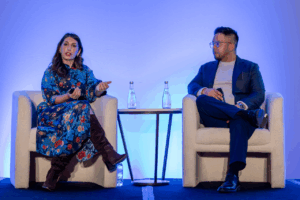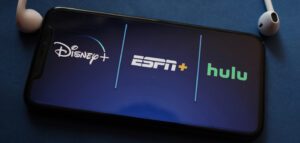 Online audience measurement provider comScore is primarily known for counting websites’ unique users. And while Gian Fulgoni, the analytics company’s executive chairman and co-founder, is a big defender of the use of the metrics that underlie those counts – i.e., the gross ratings point – he’s also looking beyond that data point to try to get a better sense of how social media impacts brands. In a conversation following a panel he moderated at day one of the ARF’s Audience Measurement 7.0 conference, Fulgoni also discussed comScore’s ambitions to conquer the TV data space as well.
Online audience measurement provider comScore is primarily known for counting websites’ unique users. And while Gian Fulgoni, the analytics company’s executive chairman and co-founder, is a big defender of the use of the metrics that underlie those counts – i.e., the gross ratings point – he’s also looking beyond that data point to try to get a better sense of how social media impacts brands. In a conversation following a panel he moderated at day one of the ARF’s Audience Measurement 7.0 conference, Fulgoni also discussed comScore’s ambitions to conquer the TV data space as well.
AdExchanger: Are GRPs a relevant metric for online advertising?
GF: People get confused; they think GRPs are being positioned as an effectiveness metric and it’s not. It’s a delivery metric. The second reason is that they’re thinking of targeting. If you’re goal is targeting, reach isn’t the issue. My point is, sure that’s fine, but it sure would be nice to know how many impressions you delivered, right? And how many of those impressions were visible. Those two points should be very important to advertisers.
So the idea is that in order to have a fuller picture of your advertising spending, you need GRPs as a foundation.
Absolutely. And if I can add a third point, GRPs tell you if your ad was delivered in the right context. While targeting is great, no one thinks about where exactly the ad is landing and what it’s surrounded by.
Is comScore saying that GRPs are the primary metric, in a general sense?
We’re by no means saying that GRPs are the only metric. If you’re asking, What does comScore want to be measuring, yes, we started off as a company that was best known for providing websites’ audience sizes, demographic data. After that, we then started measuring mobile, which has been a challenge. We’ve done it a variety of ways, such as using panels, we get feeds from the sites themselves and we have that comScore cookie, which lets us see what devices are being used.
The last big screen is television. The availability of set-top boxes, which provides tremendous amount of information. The statistical approaches that have been developed with digital will move these dollars over, might well cause the acceleration of the availability of all these databases that are currently associated with online to be adopted more completely for TV.
What’s your sense of the value of set-top box data?
If you think of a set-top box as the unit of measurement, and not an individual panelist the way Nielsen does, you can do a lot more in terms of measuring campaign delivery and effectiveness. It’s something we’ve been used to in the digital world for some time. If these Validated GRPs, as we call them, become used more and more, that will create much greater confidence among advertisers and lead to even more money shifted to digital generally.
AdExchanger Daily
Get our editors’ roundup delivered to your inbox every weekday.
Daily Roundup
comScore is looking more at social, you’re about to release another study in the Power of Like series. What have you learned?
What we’ve done is to prove that a brand’s message that goes to its Facebook fans and is then amplified to their friends really does move the needle for advertisers in terms of brand lift. We looked at the impact of Facebook for Starbucks and saw a 30 percent lift, we did it for Target and recorded a 20 percent lift. It quantifies something we all know: a message that comes from a friend is more valuable than if it comes directly from the brand.
So you have greater proof of word of mouth marketing.
Word of mouth marketing has been talked about for 50 years, but we never had a good way to measure it. With Facebook and other social platforms, word of mouth is happening at a speed and level of engagement that has never existed before.
Can it help assess the value of earned media to Facebook, which is under greater pressure to show it can drive its own revenue?
Well, as you say, this is earned media so it’s not putting money in Facebook’s pocket, at least not directly. It does prove the basic model that Facebook is running on. And you could pay Facebook for better placement of your message, just like advertisers do with Google, in terms of putting their paid placements on top of a user’s search results.
By David Kaplan












